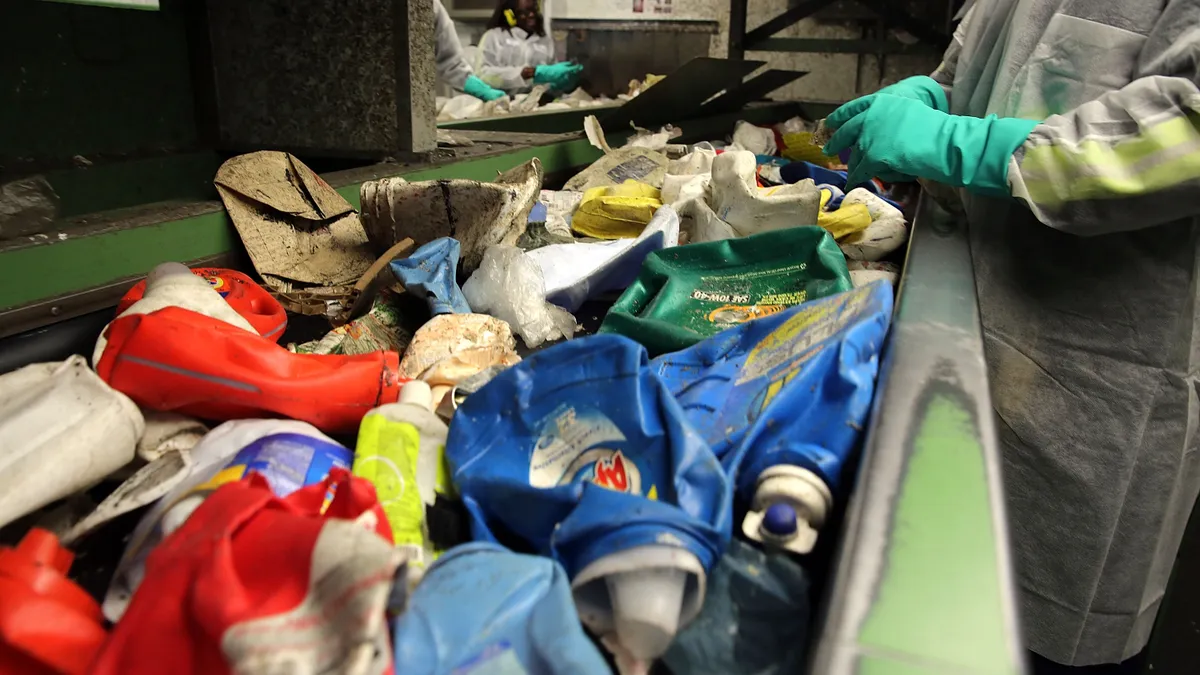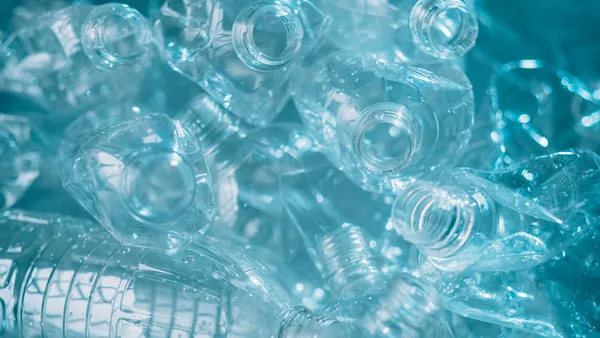A new draft strategy from the U.S. EPA calls for numerous plastic pollution reduction measures, including ones meant to align collection, recycling and composting with environmental justice efforts.
The draft National Strategy to Prevent Plastic Pollution, an extension of the EPA’s National Recycling Strategy released in 2021, calls for reducing pollution during plastic production, improving end-of-life plastic management and preventing plastic trash and microplastics from entering the environment.
In the last 20 years, global annual production of both plastics and plastic waste has more than doubled, the EPA says. “We must combat plastic pollution from every angle and prevent it at every step of the plastic lifecycle,” said EPA Administrator Michael Regan in a statement.
The EPA released the draft strategy on Friday and is asking the public for feedback. It expects to finalize the document by the end of the year.
Waste, recycling and composting highlights
The document calls for several actions meant to increase solid waste collection while making the process safer for the environment and surrounding communities.
The EPA proposes that recycling facilities, incinerators, landfills and chemical recycling facilities undergo an environmental justice assessment, which the agency said would help determine whether such operations increase pollution in overburdened areas or “fail to use a circular economy approach that is restorative or regenerative by design.” The assessments would also give the EPA another avenue to work with people living in impacted communities to address their environmental and health concerns.
John Hocevar, Greenpeace’s oceans campaign director, said it’s encouraging to see the draft’s emphasis on environmental justice. “Low-income communities — especially people of color — are the most harmed by plastic production, use, and disposal,” he said in a statement.
To address pollution concerns in how plastics are recycled and traded, the EPA also suggests an “accredited, voluntary third-party certification program for plastic recyclers.” The document doesn’t offer details, but it says the certification would “address multiple aspects of sound recycling,” such as making sure plastic waste and scrap exports follow domestic and international laws.
The EPA also recommends exploring the possible ratification of the Basel Convention, an international agreement meant to ensure certain waste is handled responsibly, including during the export process. The U.S. is one of the few countries that is not a party to the Basel Convention.
The EPA also considers compostable plastics an important avenue for further research and action. The draft calls for improving composting efforts, particularly for certified compostable products. It suggests efforts to boost composting funding and infrastructure in underserved areas and calls for researching environmental impacts of certified compostable plastic products.
Jesse Maxwell, advocacy and safety senior manager for the Solid Waste Association of North America, said the association is still reading through the full draft before making final comments, but it is glad to see the EPA use its National Recycling Strategy to guide portions of the draft plastic strategy. SWANA was “closely involved” in developing parts of the original National Recycling Strategy, he said.
Environmental groups like the Ocean Conservancy applauded the draft strategy. “To solve the ocean plastic pollution crisis, we know that we need to do it all: produce less plastic across the board; invest in waste management and reuse systems; and clean up what is already in the environment,” said Anja Brandon, associate director of U.S. plastics policy, in a statement.
Joshua Baca, vice president of plastics at the American Chemistry Council, said his organization shares the EPA’s goal of preventing plastic pollution, but he said portions of the plan that “call for alternative materials, capping plastic production or limiting innovative recycling technologies could work against [EPA] climate objectives” or force plastic production overseas to places with less stringent environmental standards.
The draft includes numerous other recommendations and calls to action:
- Single-use plastics: The EPA doesn’t specifically call for a ban on single-use plastics, but it recommends reducing “single-use, unrecyclable, and frequently littered” plastic products. It urges producers to change the design of products to offer more reuse and refill options.
- Legislation efforts: The EPA wants to study “the effectiveness of existing public policies and incentives,” such as extended producer responsibility and bottle bills, to determine best practices that could inform future agency recycling efforts.
- Public education efforts: The strategy repeatedly mentions increasing “public understanding” of how to appropriately recycle and how to reduce plastic and other trash in waterways.
- Data, data, data: The draft plan has several entries calling for better data and standardization of data for composting, waste collection, waste management, commodities exports and other metrics.
- Plastics-to-fuel: The draft affirms that the EPA does not consider technologies that turn solid waste to fuels or fuel substitutes as recycling.
- Resin code review: Updating or changing resin codes might help to reduce public confusion about recycling, the EPA says.











